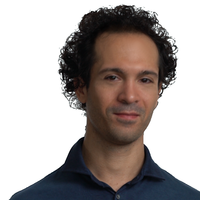#SC-02-05 Science Communication and Public Engagement
About Course
EIT FoodDescription
Define your message and share your findings through social and traditional media
Please note this course runs without facilitation
Good science communication ensures the public engage with and understand relevant scientific research. On this course, you will learn how best to share your science findings with your intended audience.
You’ll explore how the relationship between society and science has evolved over time, and find out how traditional and social media can be used to share research. You’ll learn to identify your target audience and define your message to build a shareable story.
You’ll also discover guidelines for working with journalists, and how to host small events to share information with the public.
What topics will you cover?
- Why is science communication important?
- Defining a message and the intended audience
- Going from the message to a story
- Small-scale public science dissemination events
- The relationship between scientists and journalists
Who will you learn with?
I am a research fellow and lecturer at the University of Torino, Italy. My research activities include neuroimaging of eating disorders and neurostimulation with therapeutic and rehabilitative goals.
Associate Professor in General Psychology, Psychobiology and Psychometry and Coordinator
of the Research Group “Imaging and Cerebral Plasticity” at the University of Torino, Italy
Who developed the course?
EIT Food is Europe’s leading food innovation initiative, with the aim to create a sustainable and future-proof food sector.
What Will I Learn?
- Design small-scale public science communication events
- Reflect on the role of traditional and social media in the communication of science
- Improve your science communication activities by clearly identifying the target audiences, messages and stories
Topics for this course
Introduction to science communication and public engagement
What will this course cover?
Meet the team
What brought you to this course?
Why science communication?
Let’s get started: goal and audience
It's good basic course for beginners. all topics with basic information u can use this topic and learn more by researching. good for improve your skills.
Great course, great explanations, precise and short and I can guarantee that this things you guys teach can bring people AMAZING results.
A great method to change your habits to increase positive outcomes in your interaction in any social situation.
I immediately applied the content I learned in this course to my life. It gave me a new sence of awareness in my life.





